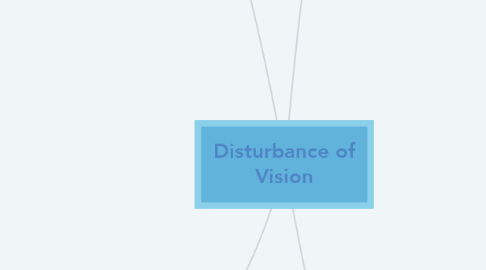
1. Lens Pathology
1.1. History
1.1.1. Multi-factorial in nature
1.1.1.1. Congenital and juvenile cataracts
1.1.2. Aging + trauma, toxins, systemic diseases, smoking, hereditary
1.1.2.1. Acquired cataract
1.1.2.1.1. "phenomenon of second light"; myopic shift & increasing focusing power
1.1.2.1.2. (+) glare w/ haloes, monocular diplopia
1.1.2.1.3. poor vision under bight illumination; predisposed with ocular co-morbidity
1.2. Eye examination
1.2.1. Swinging flashlight test
1.2.2. Fundoscopy
1.2.2.1. (+) leukocoria
1.2.2.2. thru "look through" manuever, elicits distorted ROR
1.2.3. Slit lamp biomicroscope
1.2.3.1. (+) phacodonesis, iridodonesis, pseudoexfoliation
1.2.3.1.1. difficult surgery
1.2.4. Dilated fundus examination
1.2.4.1. to check posterior pole pathology
1.2.4.1.1. for prognostication after surgery
1.3. Cataract Surgery
1.3.1. ICCE: Intracapsular Cataract Extraction
1.3.1.1. removal of entire lens
1.3.2. ECCE: Extracapsular Cataract Extraction
1.3.2.1. removal of anterior capsule, nucleus, & cortex
1.3.2.1.1. Manual
1.3.2.1.2. Phacoemulsification
1.3.2.1.3. Manual Small Incision
2. Disorders of the Retina, Vitreous, and Choroid
2.1. Retinal Vascular Diseases
2.1.1. fluorescein angiogram (FA) & optical coherence tomography (OCT)
2.1.1.1. (+) macular edema
2.1.1.1.1. Diabetic Retinopathy
2.1.1.2. (+) cottonwool spots (retinal ischemia)
2.1.1.2.1. CRVO
2.1.2. painless loss of vision
2.1.2.1. CRAO
2.2. Maculopathies
2.2.1. painless loss of vision
2.2.1.1. ARMD: non-vascular type
2.2.2. sudden onset of BOV, metamorphosia & scotomas
2.2.2.1. ARMD: neovascular type
2.2.2.1.1. extrafoveal
2.2.2.1.2. foveal
2.3. Heredodegenerative Diseases of retina
2.3.1. nightblindness or nyctalopia, progressive contraction of peripheral visual fields, BOV, (+) cataract
2.3.1.1. Retinitis pigmentosa
2.3.1.1.1. *no treatment but cataract extraction is beneficial
2.4. Tumors
2.4.1. metastatic tumors
2.4.2. choroidal capillary hemangiomas
2.5. Retinal Detachment
2.5.1. loss of vision: "curtain falling"
2.5.1.1. rhegmatogenous
2.5.1.1.1. reattachment surgery
2.5.2. wavy vision and/or visual field cuts
2.5.2.1. non-rhegmatogenous
2.6. Vitreous opacities & degeneration
2.6.1. (+) retinal break, sudden BOV, frequently w/ floaters
2.6.1.1. Vitreous hemorrhage
2.7. Uveal Effusion
2.7.1. Vogt-koyanagi harada syndrome
2.8. Infectious Retinopathies
2.8.1. HIV retinopathy
2.9. Retinochondritis
2.9.1. Ocular toxoplasmosis
2.9.1.1. immunologic examination
2.9.1.1.1. Congenital type
2.9.1.1.2. Acquired
3. Corneal Pathology
3.1. with opacity
3.1.1. Corneal scar
3.1.1.1. eye redness, tearing, photophobia
3.1.1.1.1. Microbial keratitis
3.1.1.2. mechanical and chemical trauma
3.1.1.2.1. Corneal trauma
3.1.1.3. due to drying effect in lagophthalmos
3.1.1.3.1. Exposure keratopathy
3.1.1.4. surface vascularization due to constant rubbing
3.1.1.4.1. Lid margin & lash disorders
3.1.1.5. Peter's anomaly: leukoma
3.1.2. Corneal edema
3.1.2.1. bilateral diffuse corneal haziness & ground glass appearance, thickened cornea + normal corneal diameter & eye pressure
3.1.2.1.1. infants
3.1.2.1.2. >50 years old
3.1.2.2. trauma
3.1.2.2.1. surgical: cataract extraction
3.1.2.2.2. direct: mechanical contact of instruments, lens implants, intraocular structures
3.1.2.2.3. indirect: introduction of noxious chemicals
3.1.2.3. increased IOP leading to corneal decompensation
3.1.2.3.1. Congenital glaucoma
3.1.2.3.2. Chronic glaucoma
3.1.3. Corneal deposition
3.1.3.1. Corneal dystrophy
3.1.3.2. yellow or cream-colored opacity at the corneal stromal layer + core of vascular branches
3.1.3.2.1. Lipid keratopathy
3.1.3.3. cornea: swiss cheese pattern
3.1.3.3.1. Calcific band keratopathy
3.1.3.4. cornea: central golden brown to yellow discoid
3.1.3.4.1. Hyphema
3.1.3.5. Metabolic substances accumulate in lysozomes
3.1.3.5.1. systemic mucopolysaccharidoses, hyper-/hypolipoproteinemias, sphingolipidoses, mucolipodoses, etc.
3.1.4. Corneal melting
3.1.4.1. infants with history of biologic stressors: measles or diarrhea
3.1.4.1.1. Xerophthalmia
3.1.4.2. Alkali burn
3.1.4.2.1. may lead to severe scarring and corneal vascularization
3.1.5. Corneal tumor
3.1.5.1. at inferotemporal limbus: (+) smooth, elevated tan to fleshy color, round to oval solid mass in superficial cornea and sclera
3.1.5.1.1. Dermoid choristoma
3.1.5.2. translucent, gray, or frosted epithelial sheet from limbus to cornea + fimbriated or scalloped borders & pseudopodia-like extensions.
3.1.5.2.1. Corneal intraepithelial neoplasia
3.1.5.3. wing-shaped triangular fold of conjunctiva & fibrovascular tissue with its apex invading the cornea
3.1.5.3.1. Pterygium
3.2. without opacity
3.2.1. Corneal epithelium and Tear Film abnormalities
3.2.1.1. dryness, foreign body & burning sensation, BOV
3.2.1.1.1. Dry eye syndrome
3.2.1.2. fluctuating vision + dry eye symptoms
3.2.1.2.1. Tear quality defect
3.2.1.3. (+) superficial punctate lesions
3.2.1.3.1. Toxic keratitis
3.2.2. Corneal Size/Shape/ Curvature abnormalities
3.2.2.1. rapidly progressing BOV in adolescence but stabilizes later on
3.2.2.1.1. slit lamp biomicroscope
4. Neurodegenerative disease
4.1. Eye examination
4.1.1. Visual Acuity
4.1.2. Slit lamp biomicroscope
4.1.3. Tonometry
4.1.4. Gonioscopy
4.1.5. Optic nerve head evaluation
4.1.6. Perimetry
4.2. medical history
4.2.1. common in myopes
4.2.1.1. Open Angle Glaucoma
4.2.2. common in hyperopes
4.2.2.1. Angle Closure Glaucoma
4.3. Management
4.3.1. Medical
4.3.1.1. Suppression of aqueous production
4.3.1.1.1. Beta-adrenergic blocking agents
4.3.1.1.2. Alpha adrenergic agonists
4.3.1.1.3. Carbonic anhydrase inhibitors
4.3.1.2. Facilitation of aqueous flow
4.3.1.3. Reduction of vitreous volume
4.3.2. Surgical and Laser Treatment
4.3.2.1. Peripheral iridotomy or iridectomy
4.3.2.2. Lase Trabeculoplasty
4.3.2.3. Glaucoma Drainage Surgery
4.3.2.3.1. Trabeculectomy
4.3.2.3.2. Glaucoma shunts & filtration devices
4.3.2.4. Cyclodestructive Procedure
